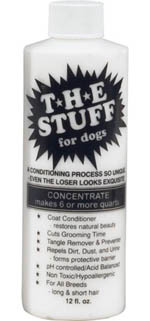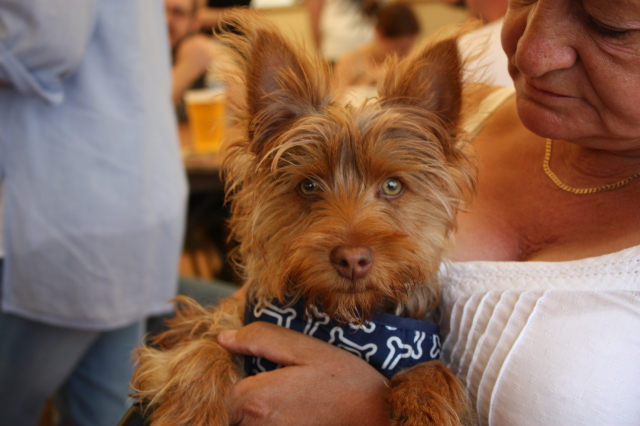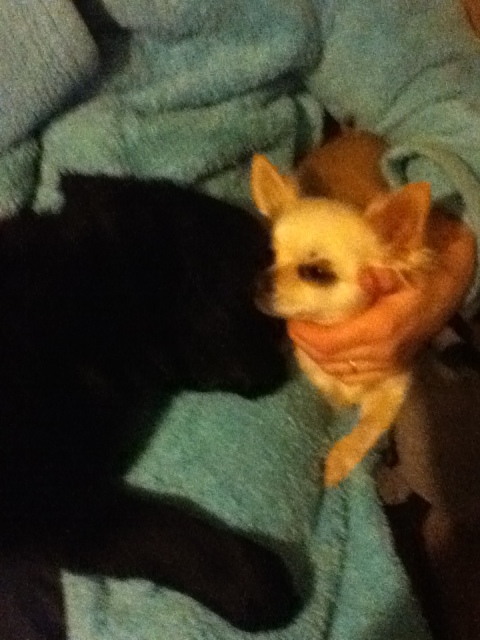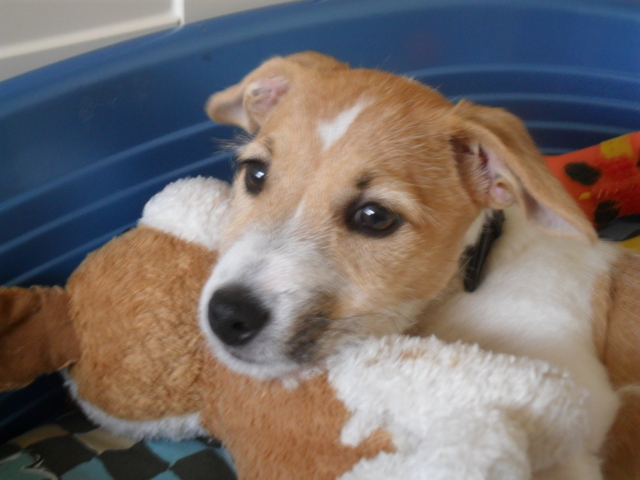QuestionDear Becca,
We've just adopted a Pomeranian from a rescue shelter. Needless to say she is afraid of most people right now and so we don't want to take her to a groomers. Her coat is a mess and my husband and I would like to give her a really close cut without actually shaving her. We've purchased a good quality dog clipper, but are unsure about what number blade we should buy. Could you suggest a blade that would leave the hair long enough to protect her skin, but be short enough to keep her cool this summer? Thank you so much for your help.
Del in St. Louis
AnswerHi Delwina,
Congratulations on your new dog!
Pomeranian fur can be tricky to deal with for the inexperienced. you write that you want to give her a close-cut without shaving her. Any use of clippers on a double-coated breed will change the fur texture forever. Pomeranians have a double coat that should not be shaved unless you are prepared to keep her in a short clip.
Is her fur dirty or is she extrememly matted? If she is dirty without matted fur, a bath will suffice. If her coat is matted and brushing with a slicker brush does not help, you may have to shave her. The problem with densly matted fur is that the thickness of the mats and how close they are to the skin, determines blade length, not the length you think is cute. The blade has to fit between the mat and her skin. If her fur is matted to the skin, with little room for the blade to fit; a close shave with a #7F or even in extreme cases a #10 might be necessary. I had a Pomeranian I kept shaved down with a #7F throughout his life. He had Cushing's syndrome so he panted when his coat was long. I rounded his head to look like a teddybear. His skin was not pink so there wasn't a threat of sunburn. It was extremely easy to maintain and he received far more attention when trimmed this way than when his fur was long.
I would suggest taking her to a groomer on a day when they are least busy. I understand your desire to protect her from anything she fears, but in the grand scheme of things, she will be a more confident dog if she is exposed to different settings and people.
From a training standpoint; The goal is to socialize her, albeit in ever-increasing increments. Socializing does not just mean letting her mingle with other dogs. Instead, it means to familiarize her with different locations, dogs and people.
As her "parent", it's your role to be confident in these situations. If you are worried and stressed about how she will react to new people . . . she will be worried and stressed. If you understand that there will be some apprehension, but you expect the greeting to go well . . . she will pick up on your energy of confidence, which will give her more confidence in new situations.
I have two rescues that had traumatic beginnings. One was tied in her backyard for the first year and a half of her life. The other was left to roam the streets and forage for food. While sheltered and awaiting a new home, the "street-survivor" was turned loose by a couple of teens --they kicked in all the kennel doors and let the animals out. They shot one dog full of buckshot, one was rundown by their car and a few were never recovered. My dog fled the shelter only to return three days later. This was the only security he knew, which was terrible considering his terrifying experience. Today, both dogs assist me in training other dogs with such behavioral issues as aggression, separation anxiety, dominance and fear-biting.
Dogs can be rehabilitated but they need our help and guidance. They cannot be rehabilitated if we protect them from venturing out into the world.
Good-luck and thank-you for rescuing!
Becca

 Matted hair removal
QuestionI have a Lhasa Apso [cuckapoo] with long matted
Matted hair removal
QuestionI have a Lhasa Apso [cuckapoo] with long matted
 Hair sore?
Question
Ozzy
My Yorkshire Terrier hates being b
Hair sore?
Question
Ozzy
My Yorkshire Terrier hates being b
 coarse hair
Question
blacklabmix
Thank you for your time. I h
coarse hair
Question
blacklabmix
Thank you for your time. I h
 Strip A Griff?
Question
Strip A Griff?
Hi, I have absolutely no intent
Strip A Griff?
Question
Strip A Griff?
Hi, I have absolutely no intent
 Bath time!
Question
Toby!
Hello, I have a 17 week-old jack russell
Bath time!
Question
Toby!
Hello, I have a 17 week-old jack russell